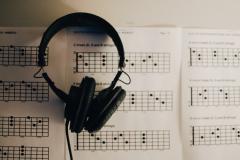1. Intermediate-Advanced
2. Students will learn the basics of improving speed and versatility
3. 2-hour session
The word counterpoint is frequently used interchangeably with polyphony. This is not properly correct, since polyphony refers generally to music consisting of two or more distinct melodic lines while counterpoint refers to the compositional technique involved in the handling of these melodic lines. Good counterpoint requires two qualities: (1) a meaningful or harmonious relationship between the lines (a “vertical” consideration—i.e., dealing with harmony) and (2) some degree of independence or individuality within the lines themselves (a “horizontal” consideration, dealing with melody). Musical theorists have tended to emphasize the vertical aspects of counterpoint, defining the combinations of notes that are consonances and dissonances, and prescribing where consonances and dissonances should occur in the strong and weak beats of musical metre. In contrast, composers, especially the great ones, have shown more interest in the horizontal aspects: the movement of the individual melodic lines and long-range relationships of musical design and texture, the balance between vertical and horizontal forces, existing between these lines. The freedoms taken by composers have in turn influenced theorists to revise their laws.











